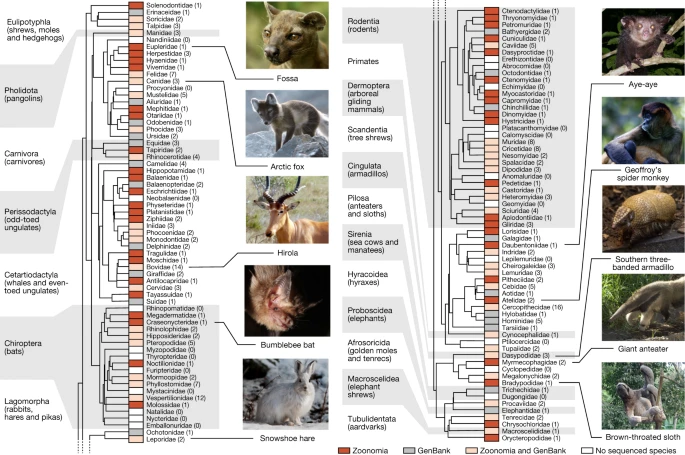Jit
Tag cloud
Our Sponsors
Comparative Genomics Data Set Including 240 Mammals Released !
The genome of 130 mammals was sequenced by a large international consortium and the data was analyzed together with 110 existing genomes to allow scientists to identify the important positions in the DNA. This report, published in Nature today will help advance research on human disease mutations and inform how best to protect endangered species.
In addition to the knowledge of the human genome, all these genomes, widely sampled across mammals, can be used to research how particular organisms respond to different conditions. Some otters, for example, have a thick, water-resistant shell, and some rodents, but not all, have adapted to hibernation. These animal traits will help us to understand human traits, such as metabolic diseases.

With climate change and more animal ecosystems being threatened by human activity, the protection of endangered species is becoming increasingly important. Scientists have historically researched several people in various populations of a species to understand the genetic variation that occurs in that species. This is important for understanding how particular species can be protected. In this study, animals on the Red List of Endangered Species of the International Union for Conservation of Nature had fewer differences in their genomes, which is consistent with their endangered status.
Ref @ A comparative genomics multitool for scientific discovery and conservation https://www.nature.com/articles/s41586-020-2876-6
Data at http://zoonomiaproject.org/
- Computational Genomics: Applied Comparative Genomics
2696 days ago
Jitbookmark - Two postdoc positions to study multiscale genome evolution and cephalopod gene regulation...
1581 days ago
NeelOpportunity posts - Postdoc in Genomics of Pipefishes and Seahorses at NSF-funded postdoctoral project in Adam Jones'...
1560 days ago
BioStarOpportunity posts - Comparative Genomics Workshops !
1177 days ago
Rahul Nayakbookmark - phyloXML: XML for evolutionary biology and comparative genomics
2695 days ago
Jitbookmark - phyloXML: XML for evolutionary biology and comparative genomics
1956 days ago
Jitbookmark - Sibelia: A comparative genomics tool
1699 days ago
BioStarbookmark - GEnView: A phylogeny based comparative genomics software to analyze the genetic environment of genes
1206 days ago
Abhibookmark
